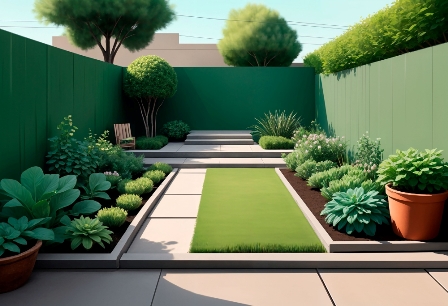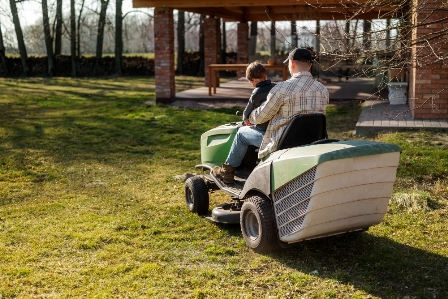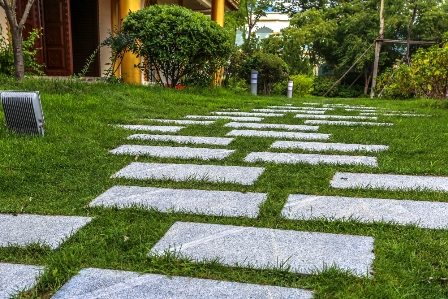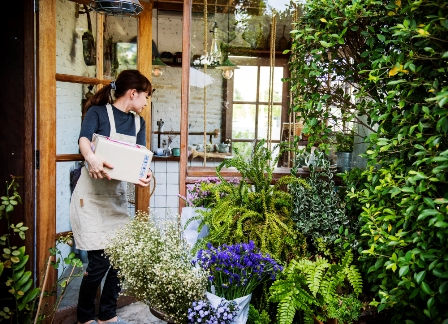When it comes to creating a picturesque landscape on a hillside, the challenge of maintenance can be daunting. However, with careful planning and the right approach, it is possible to achieve a stunning and low-maintenance hillside landscape that is both functional and beautiful. In this comprehensive guide, we will explore various strategies, plant choices, and design principles to help you transform your sloped terrain into a captivating and sustainable haven.
Understanding Hillside Landscaping Challenges
Hillside landscaping comes with its unique set of challenges, primarily due to the slope’s angle and soil erosion issues. Before diving into specific design solutions, it is crucial to understand these challenges to address them effectively.
Soil Erosion Control
One of the most significant concerns with hillside landscaping is soil erosion. Rainwater runoff can quickly wash away the topsoil, leading to barren patches and unstable ground. To combat this, consider implementing erosion control measures such as terracing, retaining walls, and the use of ground covers that anchor the soil.
Water Management
Efficient water management is essential on a hillside. The natural slope causes water to flow downward rapidly, potentially leading to waterlogging at the base and dryness at the top. Incorporate drainage systems, such as French drains or swales, to direct water flow and ensure even distribution across the landscape.
Accessibility and Safety
Hillside landscapes often pose accessibility and safety challenges. Steep slopes can be difficult to navigate and may present hazards. Creating safe pathways, steps, and handrails can enhance accessibility while ensuring safety for all users.
Design Principles for Low Maintenance Hillside Landscaping
Designing a low-maintenance hillside landscape requires careful consideration of various principles that not only enhance aesthetics but also reduce upkeep.
Terracing for Stability and Aesthetics
Terracing involves creating flat areas on a slope, which not only stabilizes the soil but also provides planting beds that are easier to manage. Use stone, wood, or concrete to build retaining walls that support these terraces. Each terrace can then be planted with different types of vegetation, adding visual interest and variety.
Choosing the Right Plants
Selecting appropriate plants is key to achieving a low-maintenance landscape. Opt for native plants and drought-resistant species that thrive in your climate and soil conditions. These plants typically require less water, fertilizer, and overall care. Ground covers, shrubs, and ornamental grasses are excellent choices for hillside planting as they help prevent erosion and require minimal maintenance.
Incorporating Ground Covers
Ground covers are essential for hillside landscaping as they help to stabilize the soil and reduce erosion. Choose low-growing, spreading plants such as creeping thyme, sedum, or juniper that form a dense mat and suppress weeds. These plants not only provide functional benefits but also add texture and color to the landscape.
Mulching for Moisture Retention
Applying a layer of mulch around plants helps retain soil moisture, suppress weeds, and prevent erosion. Organic mulches such as wood chips, straw, or compost are beneficial as they decompose and improve soil fertility over time. Inorganic options like gravel or landscape fabric can also be effective, particularly in areas prone to heavy runoff.
Implementing Sustainable Practices
Sustainability should be at the core of any low-maintenance landscaping project. By adopting eco-friendly practices, you can create a landscape that is not only beautiful but also environmentally responsible.
Rainwater Harvesting
Utilize rainwater harvesting techniques to capture and store runoff for irrigation purposes. Installing rain barrels or cisterns at the base of the hillside can provide a sustainable water source for your plants, reducing the need for supplemental irrigation.
Xeriscaping Principles
Xeriscaping focuses on creating landscapes that require minimal water. Incorporate xeriscaping principles by choosing drought-tolerant plants, improving soil quality with organic matter, and using efficient irrigation methods such as drip irrigation. This approach conserves water and reduces maintenance requirements.
Using Permeable Materials
When constructing pathways, patios, or other hardscape elements, opt for permeable materials like gravel, permeable pavers, or decomposed granite. These materials allow water to infiltrate the ground, reducing runoff and promoting groundwater recharge.
Tips for Low Maintenance Hillside Landscaping

In addition to the broader design principles, several practical tips can further simplify the maintenance of your hillside landscape.
Automated Irrigation Systems
Installing an automated irrigation system can significantly reduce the time and effort required to water your plants. Drip irrigation systems, in particular, are efficient and ensure that water is delivered directly to the plant roots, minimizing waste and promoting healthy growth.
Minimal Lawn Areas
Lawns can be high-maintenance, especially on a slope. Consider minimizing lawn areas and replacing them with low-maintenance alternatives such as ground covers, ornamental grasses, or gravel. If a lawn is essential, opt for low-growing, drought-tolerant grass varieties that require less frequent mowing and watering.
Regular Maintenance Schedule
Establishing a regular maintenance schedule can prevent small issues from becoming major problems. Tasks such as weeding, pruning, and checking irrigation systems should be done periodically to ensure the landscape remains healthy and attractive.
Conclusion
Creating a low-maintenance hillside landscape is a rewarding endeavor that enhances the beauty and functionality of your outdoor space. By understanding the challenges, applying thoughtful design principles, and implementing sustainable practices, you can transform your hillside into a stunning and easy-to-care-for haven. With careful planning and the right approach, your hillside landscape will thrive with minimal effort, providing you with a serene and captivating environment to enjoy for years to come.











Find Us on Socials